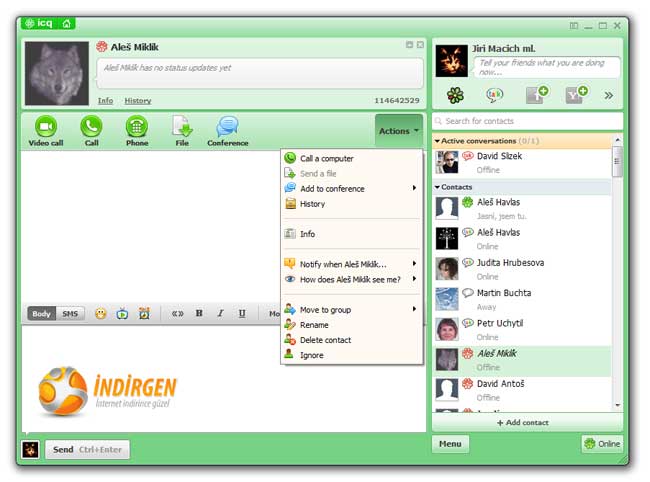
Prague, 31 March 2008 - As of today, T-Mobile and the Atlas internet portal offer free SMS from ICQ. Reply SMS from a mobile phone to ICQ are charged at CZK 3 each - the price applies to both contract and Twist customers.Users can send free SMS from ICQ to the T-Mobile network.Aftermarket plugins such as Messenger Plus! and Off-the-Record Messaging became popular as they added features like auto-reply messages and end-to-end encryption. Most IM clients also allowed users to set a text-based status, presenting themselves as available, busy, or even invisible to their contacts.īy the early 2000s, new features such as customized status messages, profile pictures, and the ability to share files and open voice and video communication sessions were introduced. This enabled users to seamlessly resume their conversations after they had gone offline. In other words, in order for a contact to be displayed on a user’s buddy list, the user would send a request (similar to Facebook friend requests) that the contact would either approve or deny. For the most part, both participants mutually agreed to be included in each other's contact directory before initiating a conversation. Unique users were identified by a personal code, an email address or a telephone number. Typical IM clients had a graphical user interface which consists of a contact directory or ‘buddy list’ and one or multiple active conversation sessions, which were displayed in separate windows or tabs. This later became the standard known as Extensible Messaging and Presence Protocol (XMPP) which is widely used even today. In 2000, Jabber implemented an open-source instant messaging protocol. Chinese Tencent launched its fast-growing local competitor QQ in 1999.

Simultaneously, other tech industry giants like Yahoo! And Microsoft launched their own IM clients, Yahoo! Messenger and MSN Messenger, which used proprietary protocols. AIM evolved from its precursor used in the Commodore, called QuantumLink On-line Messages.

Soon after, IM, also referred to as ‘chatting’ began replacing telephone calls as the most popular instant communication medium.ĪOL released a competitor to ICQ in 1997, AOL Instant Messenger (AIM) in 1997. ICQ introduced unique user identifiers (UIDs), which were strings of numbers that were used to login to an ICQ account and to initiate sessions with other users. Prior to the rise of IM, chat users joined conversation channels under nicknames. While the concept of internet-based real time chat was pioneered by IRC, ICQ spearheaded the rise of Instant Messaging (IM) by introducing a key innovation: a centralized architecture that focused on one-to-one conversations between individual users who held personal accounts.


 0 kommentar(er)
0 kommentar(er)
